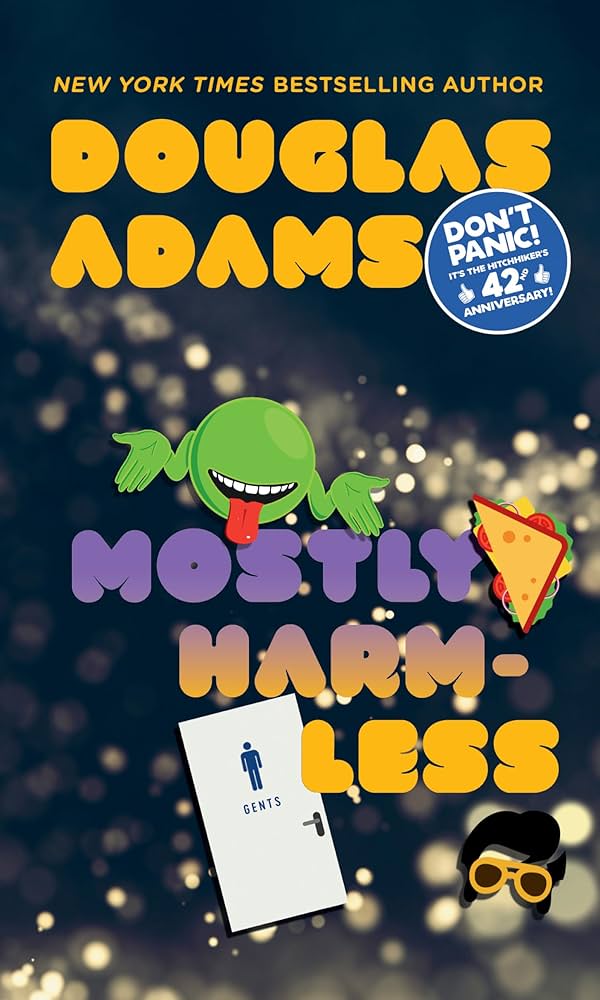
The fifth and final book in The Hitchhiker’s Guide to the Galaxy trilogy.
Coming soon…

my blog

The fifth and final book in The Hitchhiker’s Guide to the Galaxy trilogy.
Coming soon…
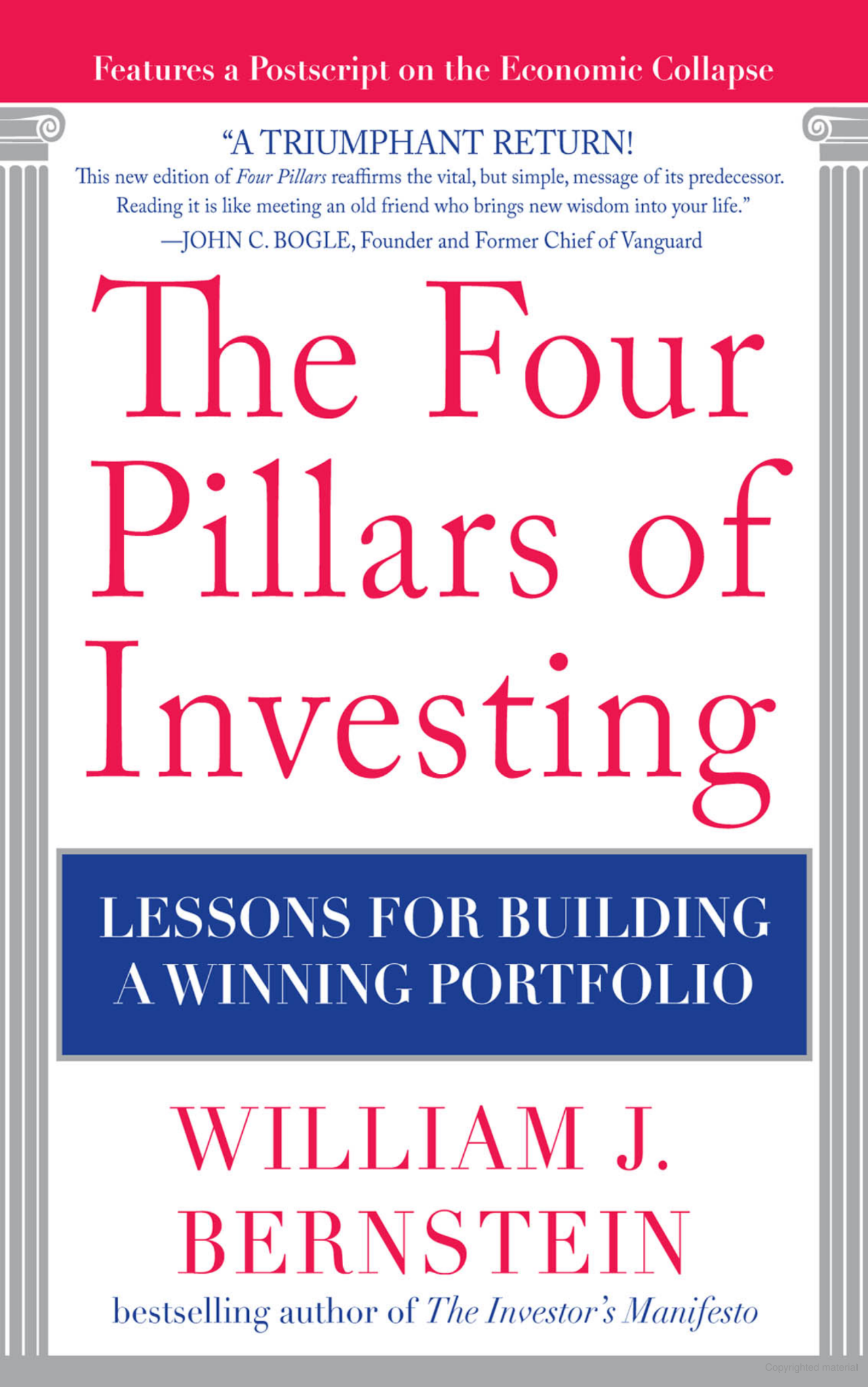
This book is mentioned in a book I previously read, The Bogleheads’ Guide to Retirement Planning. It gives much of the same advice on investing, but in a little more detail. It recommends buying the market, just as the Bogleheads’ book, but it also delves into the psychology, history, and business of investing. Combined with theory, psychology, history, and the business of investing make up the four pillars.
I already mentioned what the majority of the theory entails – buy the market. Use index funds and own some of everything, domestic stock, international stock, bonds (mostly short term), and REITs. The reason is that nobody has reliably beaten the market for any substantial period of time. Large investment companies have far more resources and insight than you do, and they often cannot do it. What chance do you have picking individual stocks? I do have a little disagreement on this. I work in pharmaceutical and technical industries and have a computer engineering degree. If I recognize a company or idea that shows great promise during the course of working with these companies, I will deviate from this core strategy somewhat and buy these companies in addition to buying the market. I will likely stop doing this as I get nearer retirement because it does entail a little more risk. A little more risk in this case often means a little more reward. I will not however, buy based on internet or media advice. This is likely tainted and biased or simply a case of a monkey throwing darts at a stock page.
There is also some industry that is always “hot”. Right now it is Quantum computing and AI. Companies such as Palantir (PLTR), Nvidia (NVDA), ARM (ARM), and Quantum Computing (QUBT) have done quite well recently. This is where the pillar of history comes into play. This book describes investment events going back to the 1600’s. In 1683 William Phips had investors set up a company to find sunken treasure in the Bahamas. It proved widely successful, with hundreds of tons of silver recovered. This lead to companies trying similar excursions with “new technology” to assist in finding even greater amounts of treasure. Untold fortunes were dumped into these ventures with no return. Later, in the 1800’s, English railroads were proving to be quite profitable investments. So much money was poured into this that rail lines were being built that made no sense. They were building lines that basically went from nowhere to nowhere with no hope of ever recouping investment costs. Later it was the dot-com bubble that popped in 2000. Regardless of the technology and its recent history, there is plenty of evidence that investors tend to over-invest in the newest technology. The most interesting thing I learned from investing history is that it is more often than not, the user of the new technology that benefits most from it, not the creator. Rail lines helped manufacturers that used the rail companies to move their goods more than it benefited rail companies in the long run. Personal computers helped businesses that used them generate more profit than those who manufactured them. Apple and IBM nearly teetered on bankruptcy for periods of time while businesses using the technology they helped promote prospered as the computer industry was overloaded with competition. With any new technology, there is going to be an inevitable, initial influx of funds with a public eager to make a quick profit. Be familiar with similar events in the past and don’t get too caught up in the emotional wave that new technology often brings.
Psychology is a pillar most do not think about when discussing investing. This is a big mistake. After reading Basic Economics, by Thomas Sowell, it became apparent to me that economics is largely just a study and application of the effects of human behavior on matters of finance. If everyone thinks the economy is great, it probably will be. The market acts in this manner. It can be wildly emotional and unpredictable. It is important to create a plan and stick to it. If you invest for long enough, you will almost certainly encounter a time when your portfolio loses 20%. This can be very disheartening and cause investors to bail out and accept losses rather than incur more. If you have a good plan in place, this is when you sell your more profitable assets to buy those currently at a discount. Psychologically this is tough, but to follow a plan and keep a portfolio in balance (ratio of stocks to bonds), it is necessary.
Finally, like the Bogleheads’ book, this book does not look on financial advisors favorably. Here is a quote from the back cover, “The stockbroker services his clients in the same way that Bonnie and Clyde serviced banks.” Like the Bogleheads’ book it points out that success and failure, long term, in investing, can be the difference of a few percentage points. If you are paying an advisor 1% and he is buying funds that have high fees, you are starting out in the hole. I have had money money in a managed account. I saw exactly what they do with it. It is exactly what is outlined in this book. Having Vanguard or Fidelity manage your money will likely work out for you if you do not have the stomach for investing for yourself, but it will likely cost you a couple of percentage points. Over many years, this will likely amount to a great deal of money. This book is well worth reading so you can handle your own investing, or at least identify what proper investing should look like.

I found out yesterday that my mother has passed. My mom was born in Zurich near the end of World War II. At 19, she travelled to the United States with her mom and ended up staying in Chicago. She spoke no English when she arrived, but was accustomed to learning languages as she spoke French, Italian, German, and Swiss German at the time. She found work almost immediately in a camera shop where she learned English by speaking to customers. She found friends quickly and got an apartment with a roommate. Coincidentally, my father and his longtime friend, Buddy, also lived in this building.
My father was a musician, but he was also a bit of a linguist (he had a degree in French). He took a liking to my quirky, cute, outgoing, multilingual mom and they married a few years later.
I am still processing this…
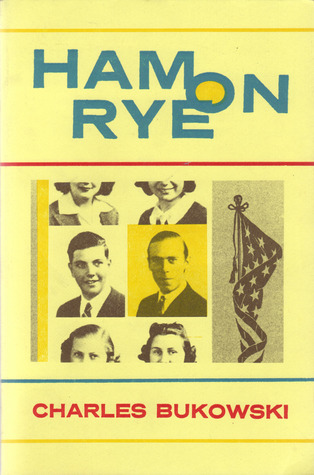
A Bukowski autobiography of sorts. It follows the life of the familiar Henry Chinaski character – presumably Charles Bukowski, himself, from early childhood to early adulthood. It has the same writing style as his other novels. An in-your-face, I have my flaws, and I am going to tell them to you style that describes his dysfunctional upbringing that starts in Germany and quickly moves to Pasedena, California. It recounts, sometimes in cringy detail, the struggle of an outcast growing up in a tough, lower-class neighborhood.
The timing of Bukowski’s life was far less than ideal. He was born in Germany in 1920. A time when Germany was suffering greatly from the effects of the Treaty of Versailles that came with the end of World War I. His parents likely left Germany in response to the bleak economic outlook there. Moving to the United States at that time was likely an improvement over life in Germany, but then the Great Depression broke out. For most of Bukowski’s childhood, economic conditions were dismal. Bukowski’s mom kept a low-paying job, and for extended periods his dad “pretended” to work. He would leave the house at the same time every day with no particular place to go. He wanted his neighbors, who were mostly unemployed as well, to think he had a job.
Henry Chinaski (Charles Bukowski’s pulp version) despised his father. His father beat him pretty regularly and never uttered a kind or positive phrase to his son. He is described as being perpetually angry at and with everyone. His mother didn’t do much to nurture him. From a young age, Chinaski simply wanted to be left alone.
From his own descriptions, Chinaski appeared older than he was during his teen years. This gave him some respect from classmates early on, but he eventually succumbed to some of the worst acne I have ever heard described. He had boils all over his body to the extent that he did not go to high school for a term. Through this misfortune, he describes meeting the first person that he genuinely felt cared about him. It was the nurse that carried out the regular, albeit, ineffective treatment on him for his acne. He would lay for hours as needles and drills were inserted into his boils to express them. This was typically followed by UV treatment and then, later, by applied clay-like substances, and being bandaged like a mummy. Being bandaged like a mummy seemed to be the only treatment that had any kind of positive effect – and it was minimal. Chinaski, however, enjoyed being bandaged like a mummy. It allowed him to wander publicly in anonymity, without his gruesome scars and boils visible to the world.
His maladies and his uncaring parents built him into someone who didn’t tolerate much of the nonsense generated in modern life. If someone who was much older and larger than him gave him a hard time, he was giving it right back, ten-fold. He didn’t care if he risked a beating. He also saw through the nonsense of many societal norms. He joined ROTC in school so he wouldn’t have to undress for gym class, and reveal his boils. He excelled at drill exercises, he surmises, because he did not care about making a mistake. The jitters of competing in rifle drill exercises that were present in all his competitors were absent in him. He didn’t give a shit. He won the drill medal that many of his classmates would have died for, and threw it down a manhole grate on his way home following the event. His indifference bordered on comedy.
His maladies also largely caused him to give up any hope of dating. Most teenagers are constantly pre-occupied with the prospects of dating and sex. Chinaski felt, given his appearance, it wasn’t even worth the effort. The desire was there, but his sense of practicality and understanding of society overrode it. A broke guy, covered in boils has no chance.
Early on, Chinaski found that he had what was likely an unhealthy fondness and tolerance for alcohol. He imbibes, to excess at every opportunity – usually with a supply provided through a peer that falls by the wayside before the young Henry Chinaski is even getting started. He determines that all he needs to be content in life is a supply of alcohol, a room of his own, and a modest, steady income. He seemed to embrace these values, or lack thereof, for the rest of his life.
Despite his general disdain for school, Chinaski does quite enjoy reading and frequents the library to the extent that everyone there recognizes him when he checks out books. He also has a typewriter that he uses to do some of his own writing. Shortly after he completes high school, in the closing chapters of the book, Chinaski’s father finds some of his writing. Chinaski has hidden it under the lining of his dresser drawer, but his father finds it, regardless. It details parts of his life, parts that his father finds far less than flattering. Furious, his father throws all his belongings into the front lawn, which Chinaski gathers up into a solitary suitcase and departs with in search of shelter. He finds a couple of dank, by-the-week rooms, attends community college by day, and drinks to excess, often alone, as he likes it, by night. The book ends as news of the Japanese attack on Pearl Harbor is being broadcast. He contemplates joining the military to fight, but comes upon the question, “fight for what?” He has nothing in the society he lives in. Signing up to him means fighting for the rich to keep what they have.
Bukowski does an incredible job of making you cheer for the anti-hero. You cringe at most of his behavior, but still care for him. Kind of like the family dog that misbehaves.
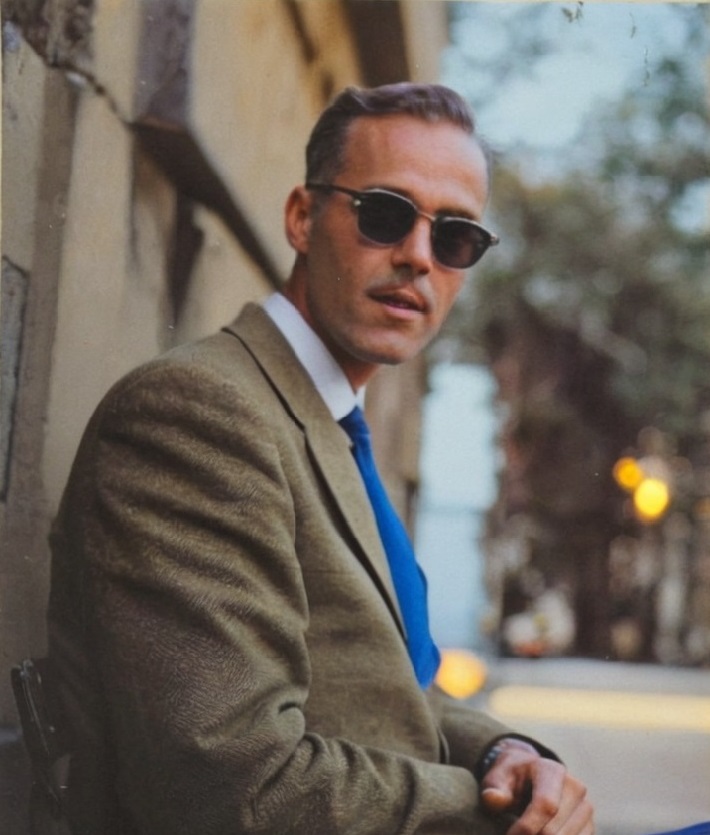
My father spent just about every second of his life thinking about music. He played everywhere he could and played with all the jazz greats of his time. His main instrument was the saxophone, but he also played the flute, clarinet, keyboards, trumpet, trombone, and harmonica. He was playing and teaching until his final days. His favorite musician was saxophonist, Charlie Parker. An album of songs dedicated to Parker and written by my father, entitled, That’s the man they called Bird, is my favorite. My dad plays saxophone, clarinet, and flute on the album. He never got the sort of recognition he hoped for from the music industry, so I thought I would share some of his music. I have put it on Soundcloud for anyone that would like to listen and enjoy.
Update – I have remixed most of the songs and replaced the older versions – 6/5/2025
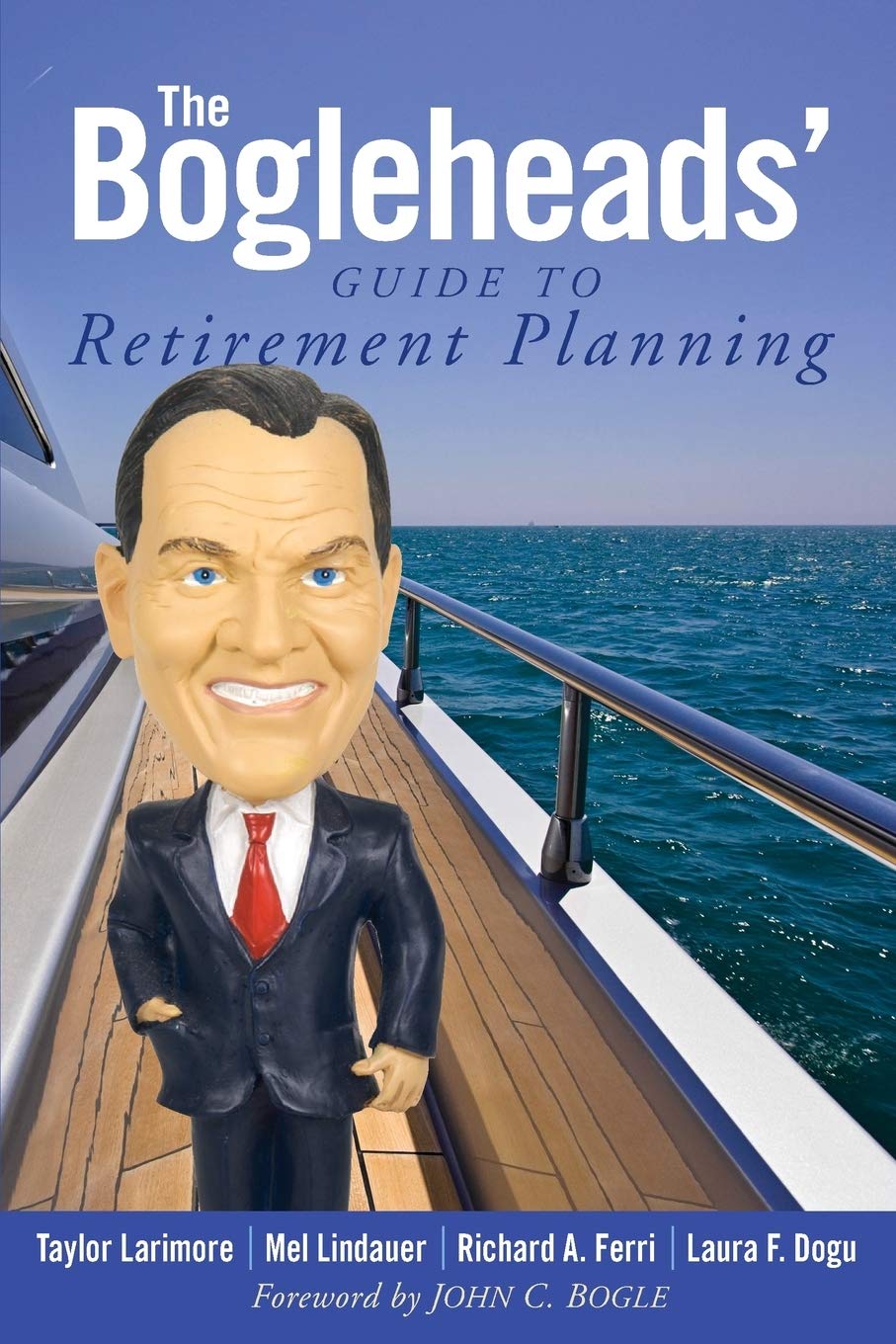
John C. Bogle was the founder of the Vanguard Group and regarded by Warren Buffet as, “the person who has done the most for American investors.” His principals of investing garnered a large following by those who refer to themselves as “Bogleheads”. This book is a very practical and well-written overview of everything someone needs to know about retirement planning.
As far as US citizens are concerned, the companies they work for and their government are not going to provide enough to retire with any level of comfort or security for a vast majority of retirees. Long gone are the days of reliable pensions. If you want to have some level of comfort and security in retirement, you must make your own plans, and you must follow them. The earlier you recognize this, the more likely you are to age out gracefully. Most investments will rely on compounding interest. Time is your friend in this respect. Modest investments, started early, will often amount to more than large investments started many years later. What you save matters much more than what you make. Live below your means.
There are many conventional ways to invest – 401k’s, IRA’s, individual investment accounts with foreign and domestic stock, bonds, Roth IRA’s, REITs, precious metals, and CDs. The list is quite long. Each has its own tax laws associated with it. This book does a great job of explaining the tax implications of each. This can be quite important. For example, $100,000 in a Roth IRA can be worth considerably more than $100,000 in a 401k simply because the way they are taxed, or in the case of the Roth, not taxed.
One of the pieces of information I was not aware of, that this book shared, is that like a 401k, there is a penalty for early withdrawal from a Roth account. The penalty on the Roth money is only assessed on the gains, whereas on a 401k there is an automatic 10% penalty on the entire amount in addition to the taxable income the withdrawal incurs. If you are a younger investor putting money in a fund that you can’t touch until you’re 59 ½, a Roth may seem like a bad idea because those funds are going to be tied up for a long time. You might be thinking that you may need some emergency funds at some point before your 50’s and you do not want to incur penalties on money you have already paid tax on. The knowledge that the penalty for an early withdrawal in a Roth is not as severe as a 401k may get some to invest earlier. Try not to touch this money, but it is there if you absolutely need it, and without the severe penalties you might expect. The reward is the only tax-free income in retirement that I am aware of.
When I purchased the book, I was operating under the assumption that it was just a book about investing. Roughly half the book is dedicated to this. The remainder discusses probate, annuities, life insurance, health insurance, Medicare, trusts, taxation, finding competent/trustworthy advisors, and social security. Just about everything covered in this book is going to be affected by legislative or economic changes, but it still gives a very useful overview of each topic and guides you to where you can obtain the most up-to-date information. The book also mentions that there is a Bogleheads’ book dedicated entirely to investing. Given how helpful this book was, I will likely seek out the investing book at some point in the very near future.
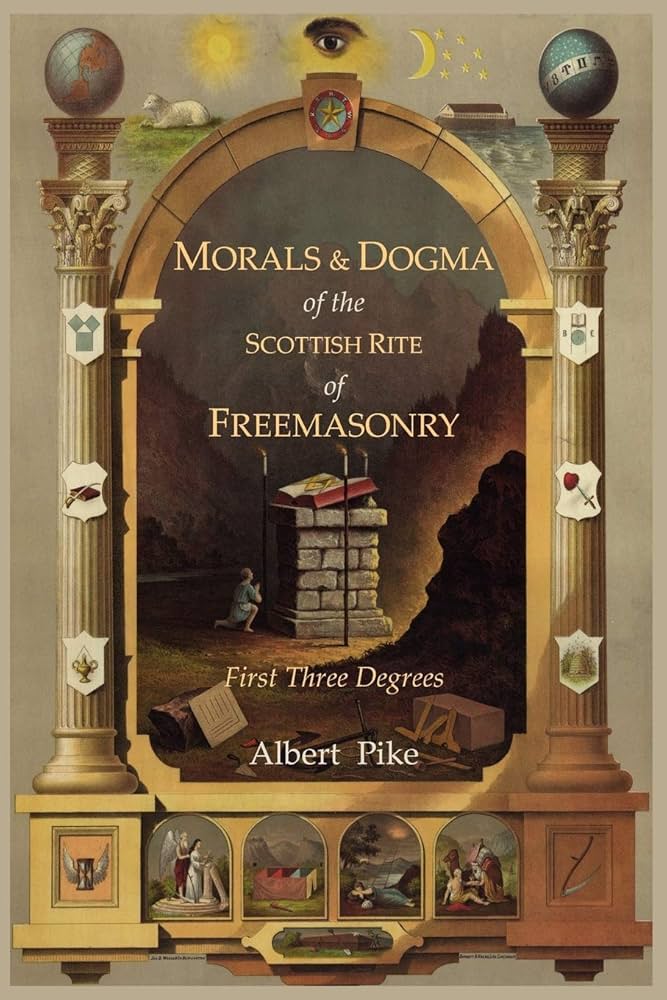
I travel quite a bit for work, and there is a pharma plant that I seem to work at for at least a few weeks every year since 2015. One constant at this facility is a gentleman by the name of Ruben. Ruben is always in high spirits and fun to converse with. The last few times I have worked at his plant he has mentioned this book. I had done a quick Google search on the author and was somewhat put off from reading the book. The author, Albert Pike, was a civil war general for the confederacy and there are definitely some questionable ties to his name, but the fact that Ruben, who I consider a great human being, kept mentioning this book led me to go ahead and finally read it.
Pike was originally from New Hampshire and attended Harvard for a time, but did not graduate. It is clear from his writing that he is very intelligent, although, mostly self-taught. He worked as an attorney before the civil war and is know for helping to defend the rights of native Americans. This was a stance that was likely unpopular with the majority of the populace while Pike was doing it. As the title of the book might suggest, Pike believed strongly that moral behavior was the backbone of a successful society, particularly in government leadership roles. He also notes that the vast majority of these roles are not held by moral or honest incumbents. Too many leaders without morals, will lead to an eventual societal decline and collapse.
Largely, when Pike speaks of morals, he is referring to behavior that aligns with Christian teachings. He also specifically mentions that prejudice is immoral. This coupled with his frequent defense of native Americans makes me question the true motives of the American civil war. I do not believe it was as black and white, forgive the pun, as slavery versus anti-slavery. Nothing is his writings would suggest favoring slavery, in fact, everything Pike writes, when taken literaly, opposes slavery. It promotes an organization outside of the mainstream, freemasonry, that serves to keep humanity headed in a fair, just, and proper direction that aligns with God and nature.
The one thing that really strikes me as odd is the last few sections of the book. Pike explains that nothing in the book is as it seems and true meanings are hopelessly hidden within the text, so maybe the internet description of the man is a more accurate picture of him than his writings? It appears that I will likely never know. Anyway, this was an interesting read. Given its initial publication date of 1871, I feared the language in it may be hard to follow in modern times, but this is not the case. The book is quite readable, despite its age, and oddly prophetic with regard to modern politics.
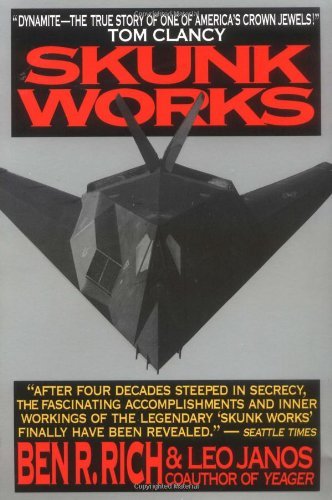
A peek into Lockheed’s top secret development department that brought the U2 spy plane, the SR-71 , and stealth technology to life.
I am an engineer, so of course the technical aspects of the book are what drew me into it, but I found myself more interested in the comical workings of the government, particularly the CIA, in these engineering endeavors. Both the U2 and the SR-71 were projects, at least initially, taken up for the CIA. The U2 spy plane was built to fly above the Soviet Union, undetected at 70,000 feet, and take pictures of any nuclear or military activity within the Soviet borders. This project started in the 1950’s. The CIA did not, and presumably does not currently, get funding that is acquired through typical, shall we say, legitimate channels for their little “projects”.
To fund the U2, the CIA created a bogus corporation that would send checks to the Skunk Works’ head, Kelly Johnson’s, home address. Parts to build the plane were ordered through bogus companies and were sent to an empty building serving as the fake company’s headquarters. The said parts were then transported to Lockheed. Some of the checks, in 1950’s money, were in the neighborhood of $1,000,000. Who knows where this money came from? The operation was so shady that suspicious postal inspectors sent someone to follow the vehicles leaving the fictitious company’s headquarters to bring parts to Lockheed. The postal inspectors quickly found themselves on the wrong side of a CIA interrogation once they arrived at Lockheed.
With the U2 finally built and tested, pilots were needed to fly it over Russia. The CIA tried to use Turkish nationals as they felt it would look bad if an American pilot were shot down inside of Russia. This plan did not go well. The U2 was extremely difficult to land and fly. It had just two tandem wheels, like a bicycle, and extremely long wings that would often slap the runway upon landing. It was meant to fly at 70,000 feet, a feature that, at the time, could only be accomplished by keeping the weight very low. This meant only one seat, so training, which is normally done with an experienced pilot flying with his student, was impossible. The CIA then decided to use Air Force pilots. But they couldn’t be Air Force pilots. They had to resign their commissions and join Lockheed under assumed names with their pay coming from the CIA through checks from bogus companies. Here is a view of a pilot inside a U2 at altitude:
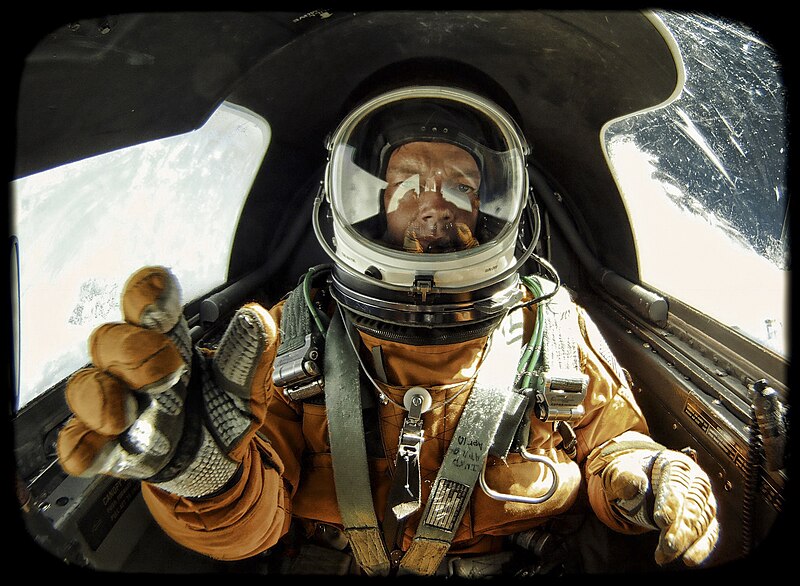
The U2 was largely successful in that it could fly over Russia, almost at will, without being shot down. Unfortunately, Russian radar was far better than predicted and, although it could not be shot down, the U2 could be tracked by Russian radar from almost the moment it took off to the moment it landed. The plane was built to fly at 70,000 feet as Russian fighter planes and missiles were assumed to not be able to approach this height. This proved true. U2 pilots frequently saw Russian fighters scrambling towards it, but they could do nothing more than fly in formations 15,000 feet below, to partially block the U2’s view. It was also thought that Russian radar could not be effective at this height. This proved to be untrue. This was the height of the cold war and US-Russia relations were tense. Having a spy plane that Russia knew was flying over, but could do nothing about did not help relations. The US also knew that the Russians would eventually be able to shoot down something they can easily track.
This gave way to the CIA’s next spy plane-the SR-71 Blackbird. This plane was designed to fly at 90,000 feet at a blistering Mach 3. A plane at this speed will get surface temperatures exceeding 800° F just from the air moving over its surface at such a high speed. Standard plane-building materials such as aluminum were out of the question for this application. Titanium was settled upon. Oddly, the only place capable of supplying enough titanium to build this plane in 1960 was Russia. Bogus corporations were set up to buy titanium from Russia so that the SR-71 could be built to spy on Russia. You couldn’t make this stuff up if you wanted to. Titanium was very strong and brittle compared to most materials. Lockheed had to figure out ways to machine it as standard machining tools and processes of the time did not work on this metal. Titanium also reacted to other metals and chemicals in ways that typical aircraft materials did not. Eventually, Lockheed figured out how to make a a plane almost entirely out of titanium. This was the result:

Pretty crazy looking for 1964? It still looks futuristic. It could fly from New York to Los Angeles in less than an hour. It might still be the fastest plane ever built. It actually was capable of exceeding Mach 3, and has gone as fast as Mach 3.5 (2685 mph) with a ceiling of 86,000 ft. It could cruise at Mach 3. Known planes that can hit speeds above Mach 2, can only do so for short periods of time. This was truly a ridiculous feat of engineering during a time when the fastest computer of the era wasn’t capable of running the simplest app of a modern cell phone.
It’s interesting to note that the SR-71 was originally referred to as the RS-71 from inception and for several years after, until president Lyndon Johnson misspoke when announcing the existence of the plane to the public in a speech. He mistakenly referred to the aircraft as the SR-71, so rather than issue a correction to his speech, Lockheed was forced to change tens of thousands of pages of documentation and drawings to refer to the plane as the SR-71, rather than the originally intended RS-71. Given the timeframe, the mid 1960’s, these were tens of thousands of all hand-drafted drawings and typed documents that each had to be duplicated, by hand, at great time and expense, to reflect the president’s accidental mis-naming.
Of course the CIA could not stop with the SR-71. They needed a plane invisible to radar. Enter stealth technology. Ironically, again, as with the titanium supplied unknowingly by Russia for the SR-71, stealth technology was also largely borne from Russia. A Lockheed engineer, Denys Overholser, stumbled upon the works of a Russian Physicist named Pyotr Yakovlevich Ufimtsev. Pyotr had come up with the math necessary to design and compute the radar profiles of objects. Pyotr’s work was overlooked by the Russians, but Lockheed recognized its potential value and began building prototypes based off of designs dictated by the Russian physicist’s formulas. They proved very viable as the Lockheed prototypes were dozens of orders of magnitude better than any other military contractor’s stealth offerings. A full-sized bomber could have the radar signature of a ball bearing. One of the most difficult aspects of the Stealth bomber’s design was disguising the pilot’s round head in the cockpit from radar. Round shapes are picked up well by radar. Here is the familiar outline of the well-known shape of the F-117. Notice there is nothing round on it:
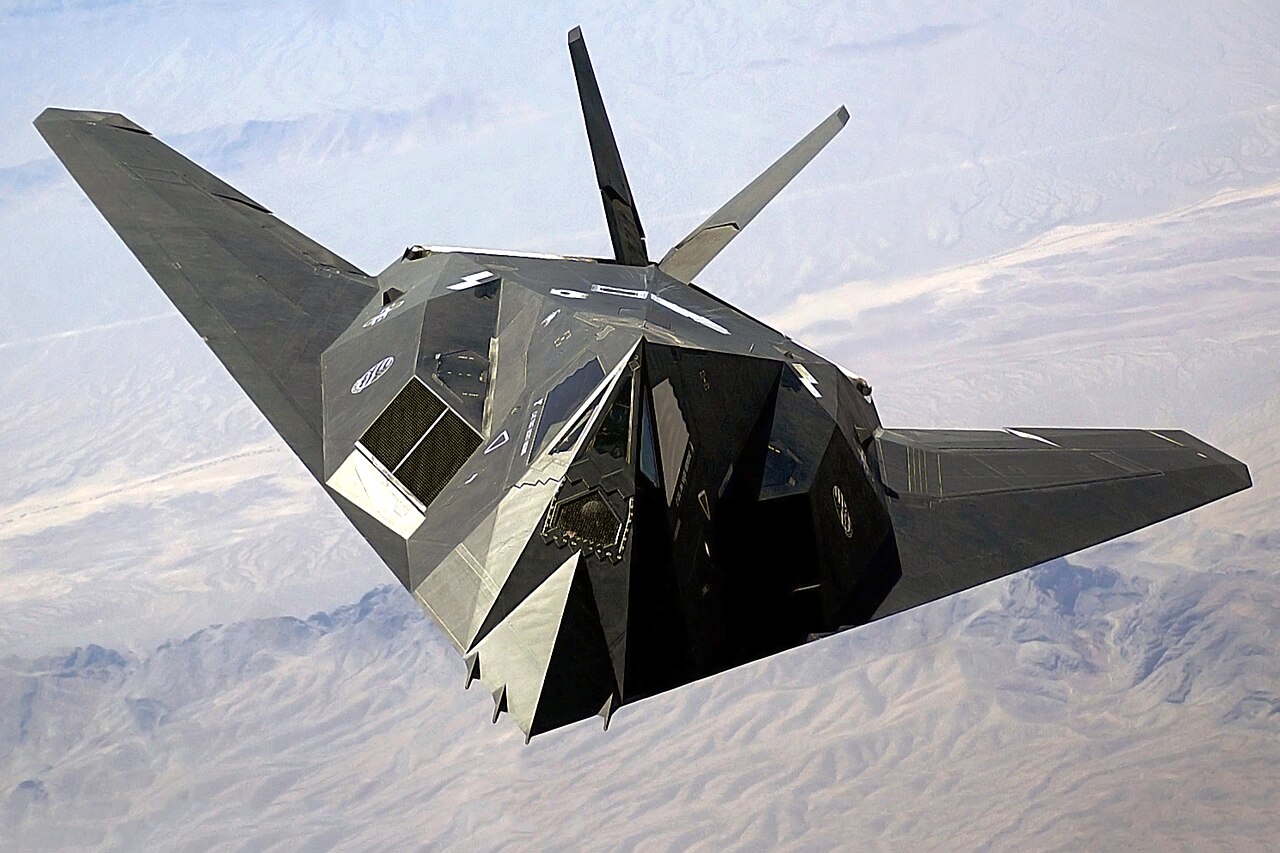
The odd design scatters radar, but makes for a rather uncontrollable design from an aeronautics perspective. Everything in the plane is fly-by-wire, with computers adjusting every aspect of the controls to keep the plane airborne. It saw its first use in the Iraq war as it sent laser-guided bombs to targets with great precision in the dead of night. After a week of non-stop bombing, Iraq had almost no remaining air defenses with none of the F-117’s being shot down as they remained invisible on the Iraqi defense’s radar screens. The plane proved a great success for over 25 years. It makes you wonder what is being cooked-up to replace it?
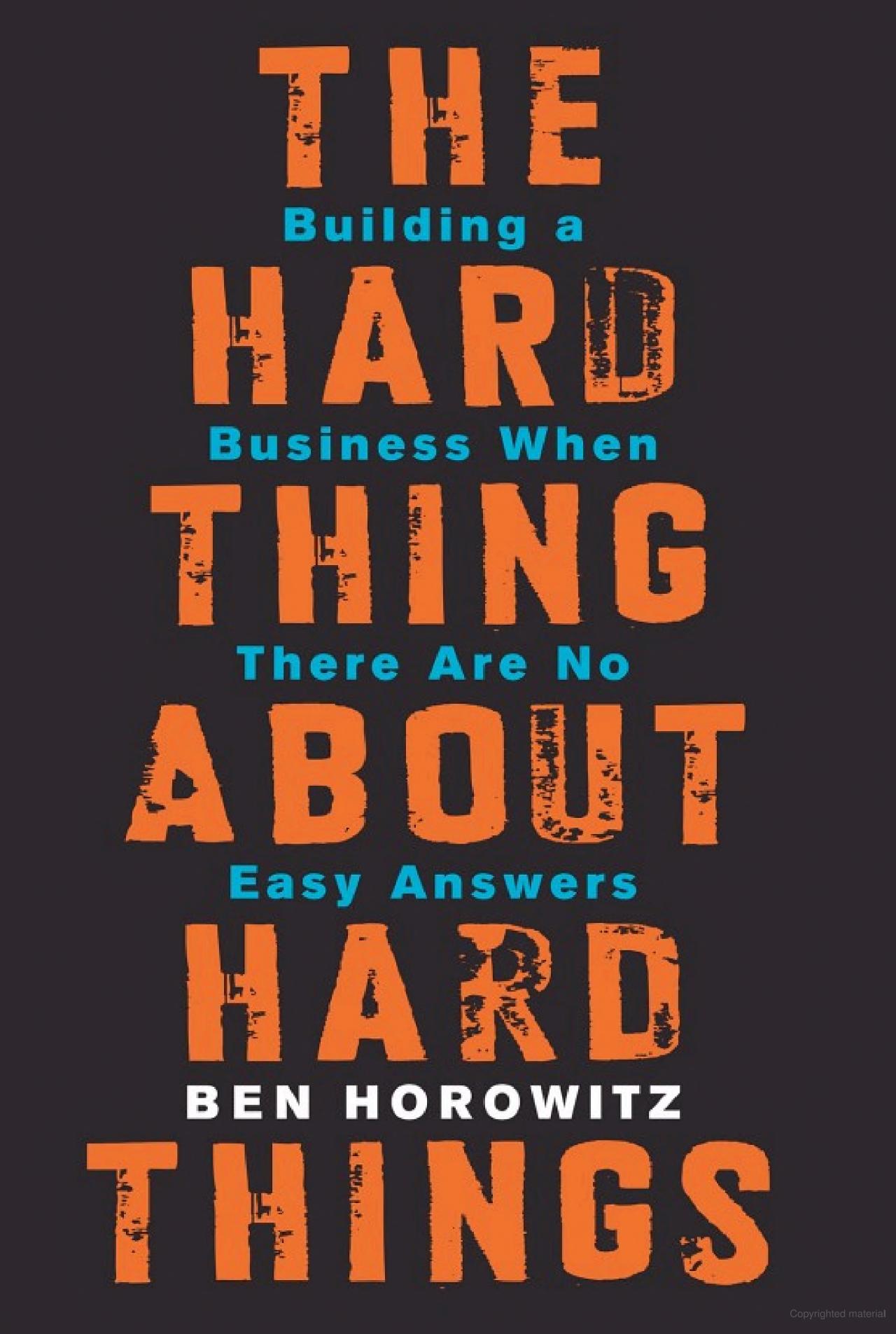
Someone mentioned this book in a LinkedIn post and it seemed interesting. It’s based on the perspective of a CEO, in this case, Ben Horowitz, of a publicly traded tech company. It details many of the decisions Ben had to make while at the helm of both Loudcloud and the company it morphed into – Opsware.
One of the interesting things mentioned in this book is that Ben notes that a company’s stock price does not always match up with a company’s value. The actual state of a company can vary wildly from the value of its stock, particularly in less established companies.
He also makes a number of comments on hiring the right people. Ben likes hiring someone based on their strengths. If an individual has a particular strength that suits his needs, he is willing to overlook weaknesses in other areas that the position might ordinarily require. No one is perfect is a recurring theme throughout this book, even with regard to the CEO.
I was surprised how often this successful CEO admitted to being “in over his head”. Reading this book gives one the impression that most CEOs spend a great deal of time “in over their heads.” Running a public company means having to make decisions and then defend them to a board that always has less information than the CEO. Most of the discussions in this book sound like there will be many sleepless nights for any CEO with a conscience. Hiring and firing is very commonplace in a tech company. Company valuations can also swing wildly with small decisions. Everything that goes right will probably be seen as a result of a joint decision (executives and board) and everything that goes sideways will fall squarely on the shoulders of the CEO. This book was somewhat anxiety-inducing.
Being a CEO does not sound pleasant, but Ben, throughout the book, never mentions many of the perks that likely exist. He also never mentions what it is like to have a net worth in the billions of dollars. This book is written like Ben never considered his personal wealth while running companies. He just seemed focused on moving his company to the next milestone without ever enjoying the ride. Ben is now a venture capitalist. Perhaps he knew what was waiting for him if he was successful and just gritted it out until he got there. I am guessing his current stress level is far lower than it was in the past.
Ben partnered with Marc Andreessen, who worked with him at Opsware. The name of the firm is AH Capital Management, LLC. They started this firm using non-traditional methods for venture capital firms. One of the non-traditional methods used was extensive marketing. In the past, venture capital firms did not employ marketing. The reason given in this book is that venture capital firms often finance wars and it is not good for business when it becomes obvious that one firm may be backing both sides of a war. I will end on that note.
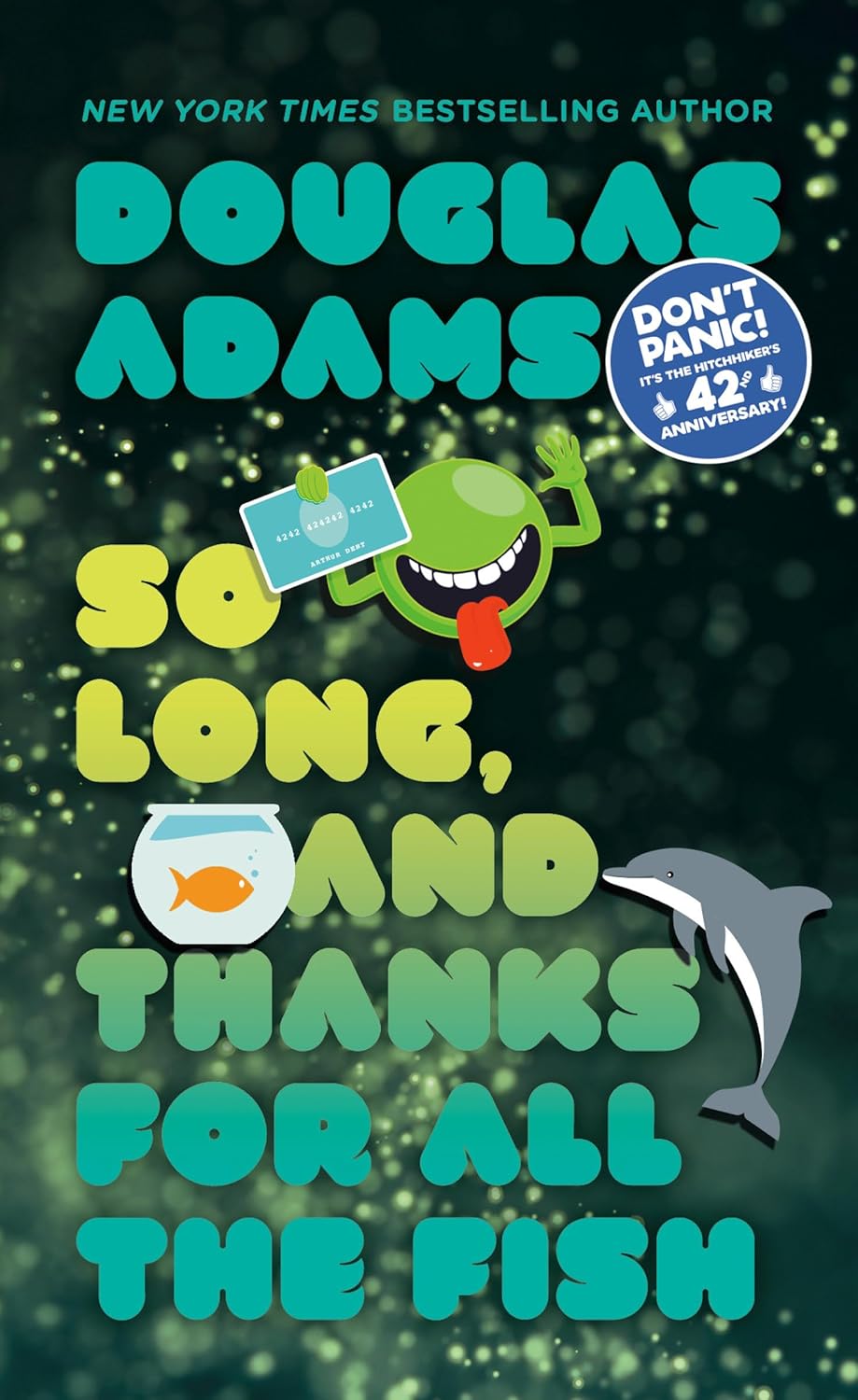
This is the fourth book in Douglas Adams’ The Hitchhiker’s Guide to the Galaxy series. The majority of the book is based on earth and really only involves three characters. Ford Prefect and Arthur Dent are both in this story and both spend most of the pages here on earth (I know I am making a wild assumption here.) They only spend the last few chapters together and depart the earth shortly before the end of the book.
Arthur finds a love interest named Fenchurch who also accompanies them into space. You might remember, or not, that in the first book of the series earth is destroyed by Vogons early in that book. Arthur and Ford are both surprised to find it still intact. It turns out that earth was in fact destroyed except that the dolphins of earth’s oceans, knew of the impending doom and transported all of earth’s inhabitants to an earth in an alternate dimension. The dolphins, however, are absent from this version of earth and the title of this book is their acknowledgement and gratitude for all the fish they were able to enjoy while on the original earth.
Towards the end of the book, Marvin the robot makes an appearance as an unfortunate victim of living for a time greater than the age of the universe. He welcomes death as the group of four venture to a site on a distant planet where God has left a final message for his creation, which is, “Sorry for the inconvenience.”
This book is well written in that it always seems to keep your interest, but at the end, you realize there wasn’t much of a plot compared to the author’s previous books. At the time this book was written, Douglas Adams was extraordinarily wealthy from his other Hitchhiker’s Guide books, so maybe his motivation, or imagination was waning when he wrote this. It’s not a bad book, but I imagine not many people would have bothered reading it if it wasn’t part of the popular series. It primarily spends its time exploring Arthur Dent’s quirky personality, which is entertaining, but the book, overall does lack a strong plot.
There are two more books in the series. The next one, Mostly Harmless is purported to be much darker than the previous books. I am not into dark books, so time will tell if I decide to read it.